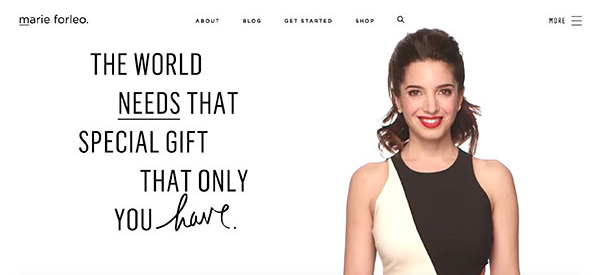
Have you created a logo for your business?
Congratulations! Your business is on the right track to having an established brand – but there are many more steps to go.
Contrary to popular belief, a logo doesn’t constitute a brand. Branding extends far beyond creating a logo, although making a logo is still an important part of the process.
If that’s the case, then what’s the difference. Let’s break it down:
Branding is much more than just a logo. It is the process of creating a unique identity for a product or service in the minds of consumers. A strong brand can help businesses to stand out from the competition, attract new customers, and build loyalty among existing customers.
There are many different elements that contribute to a strong brand, including:
- A clear and concise message: What is the purpose of your brand? What do you stand for? What makes you different from the competition?
- A consistent visual identity: Your logo, website, marketing materials, and even your employees’ uniforms should all reflect your brand identity.
- A positive customer experience: Every interaction that a customer has with your brand should be positive and memorable. This includes everything from the way you answer the phone to the way you package your products.
- A strong online presence: Your website should be easy to use and navigate, and it should be updated regularly with fresh content. You should also be active on social media and other online platforms.
By investing in branding, businesses can create a strong foundation for success. A well-known and respected brand can help businesses to attract new customers, build loyalty among existing customers, and command a premium price for their products or services.
A logo is an icon, text, or a combination of the two that represents a business. A brand, on the other hand, is the perception you’ve created around your business; it is the entire emotional experience your audience feels when interacting with or thinking about your company.
With this in mind, think of your logo as the first step of many towards building your overall brand identity. With your logo taken care of, here are a number of other components that go into creating a successful brand!
Values

Before you take another step, you should already have an idea of the values that are driving your brand. This goes beyond the products you sell or services you offer, speaking more to the reason you’re offering those things in the first place.
Are you passionate about reducing waste? Did you start your business to make it easier for working parents to find childcare options? Are you offering a more efficient delivery service than your local post office?
Get as specific as you can when determining your values, because these will be the underpinnings of the emotional experience you create for your customers – i.e. your brand!
Visual Identity

This is part of your overall brand identity, and is nearly (if not just) as important as your logo. Your visual identity is essentially the “face” your brand puts out into the world, like it’s a person rather than an idea. Of course, your brand’s face should be in line with your values – sending a cohesive, unified message to your audience.
The easiest way to determine your brand’s visual identity is to make a list of guidelines that you will stick to throughout your branding efforts.
Make sure your guidelines include:
- Color palette – Try to go with a maximum of two or three colors.
- Font – If using more than one typeface, make sure they contrast without having contradictory “moods”.
- Logo iterations – Determine how and when your logo is used; decide which layouts are acceptable and which are no-no’s.
Your logo is an important part of these considerations, as it (usually) acts as the template for your brand identity. For example, your brand color palette should be complemented by your logo colors; your logo font family should reappear in communications with your audience.
Above all, remember to stay consistent with your visual identity once you’ve got it down.
Website
Having a website is a critical way of establishing an online presence for your business. However, the way you design it can make or break your customers’ connection to your brand.
When auditing your site, ask yourself the following:
- Is there visual hierarchy? I.e. do you have headings, subheadings, and body text, based on how important the information on your site is?
- Have you used your brand colors in your site design, or is your color palette unrecognizable?
- Is your logo displayed prominently on each page?
- Finally, is the content digestible and engaging?
If you haven’t answered “yes” to all of the above, then your website is due for a redesign. Visual hierarchy will guide your readers’ eyes down the page, while showing them that your brand is clear and organized. Your brand colors and logo will help to build brand recognition, while readable, engaging content will keep them on your site, instead of giving them a reason to move on to something else.
This leads us to the next step:
Copy
Just like your brand has a “face,” it also has a “voice” – which will emerge through the content you put out into the world. Whether it’s copy on your website or long-form content on your blog, the way you speak to the world is a crucial part of forming your brand – and should depend largely on the people you’re speaking to.
For example, if your audience is the type to appreciate wit, lay on the cleverness; if they’re looking for simple and straightforward answers, give them an easy, no-frills read.
From blog posts to banners, your content should always reinforce the same message about your brand, regardless if that’s your charm and charisma or how reliable you are.
Calls to Action
Also known as CTA’s, calls to action are short bits of text that ask your audience to do something. (CTA’s are usually placed on a button, and are often linked to an external page or website).
As stated above, you’re in constant communication with your customers – but that doesn’t just extend to chit-chat. Your brand is also a directive, one that tries to get your customers to take a specific action. Whether you want your audience to post a story to Instagram, subscribe to a newsletter, or purchase a product, your CTA’s should both engage your would-be customers and say something about who your company is.
Look at famous historical figures for proof. Nobody would have difficulty associating the call for nonviolent protest with MLK Jr., and “Let them eat cake” is easily attributed to Marie Antoinette (despite there being no proof that she said it). Each of these figures’ personal brands were influenced by the CTA’s associated with them, and they are remembered for these words until today.
Similarly, the CTA’s you put out into the world can make as big a mark on your brand as the logo representing you.
Customer Service

Communication extends across the board – including how you deal with customers who have an inquiry or issue.
Are you patient and responsive? Do you respond to questions in five minutes or five days? Is your chat feature automated or personalized?
It’s certainly difficult – if not impossible – to please everyone, but believe that the way you deal with frustrated customers will show up in online reviews of your company and social media mentions, ultimately influencing people’s perceptions of who you are and how you behave.
Try to put your best customer service foot forward, showing the world that your brand goes above and beyond for its customers – regardless of the circumstances.
Your Turn
Remember that every action your company takes, whether big or small, is going to contribute to your brand in some way. Do your best to remain consistent, and ask yourself periodically if your actions are contributing to the perception you want others to have of your company. You already have your logo – now it’s time to build the rest of your brand!




